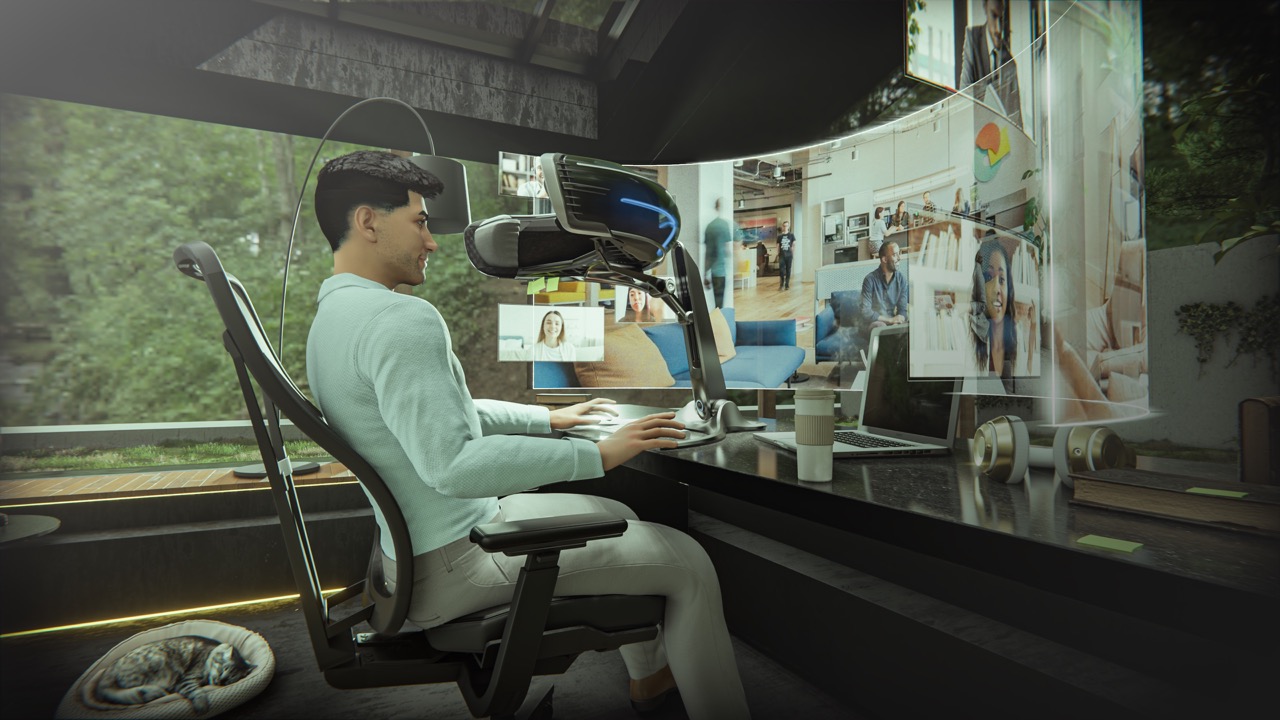MIT spin-off Brelyon first showed off its tech at CES in Vegas back in January. Today it is announcing it has raised a chunk of cash, and I spoke to the company’s CEO to get a heads-up on what he’s been heads-down with, as he’s turning heads with his headless displays.
“The future of the human/computer experience will inevitably be about amplifying immersion and intelligence. We have been experimenting with VR and wearables for a decade now, and it turns out that most people really don’t like wearing stuff on their face for a long period of time,” Barmak Heshmat, CEO at Brelyon explains as to what drives him to build this company. “People have been using screens for extended periods of time for 50 years. Our logic is pretty simple: If we can give you even half of the immersion of headsets with a device that doesn’t have to sit on your face and works with all existing content, then that would be a much more compelling progression of your computer experience and thus a better bridge to the emerging metaverse.”
It seems that investors agree with the thesis; Brelyon today announced it has raised $15 million in Series A financing led by Lockheed Martin and the MIT-affiliated E14 Fund with participation from Corning, LG Technology Ventures, UDC Ventures (the corporate venture arm of Universal Display Corporation) and Franklin Templeton. The LG connection, in particular, is important; the company has been known to make a display or two, and its interest in Brelyon could be read as a high-stakes bookmark to keep close tabs (and, presumably, information rights) on the company.
Lockheed Martin as a lead in the round is also notable; the company unlocks a customer pipeline.
“Our lead investors are Lockheed Martin Ventures and E14, the MIT-affiliated fund,” Heshmat notes. “E14 is a deep-tech venture fund investing in MIT spin-offs, and it allows us to stay connected to MIT’s talent pool and frontier technology ecosystem. Lockheed Martin Ventures allows us to really access early adopters in the enterprise.”

Brelyon is imagining a brand new world of displays that feel much bigger than they physically are. Image Credits: Brelyon
The company told me it has onboarded more than 20 companies into its early access program, and the investment will help Brelyon grow these pilot programs and get a foothold in the enterprise market.
“Short-term is going to be focused on building a foundation in manufacturing and software. More specifically I am excited about scaling some of the more elementary architectures of these virtual displays. This irons out a lot of our manufacturing settings and improves our unit economics,” explains Heshmat. “Some of these manufacturing developments can be broadly applied to a large set of products down the line and not just our Ultra Reality product line. We are also excited about our partnership with LG Display and we’re looking forward to build a foundation with them to take this from the enterprise market to the bigger metaverse market.”
The company is operating in a really interesting market; computer monitors are nothing new, but true innovation seems to have more or less stagnated. 4K displays, sure. Larger, higher resolution, yes. Lower price points for better quality, absolutely. But really, the last big change was from the big, heavy CRT displays to flatscreens, some 20 years ago.
“I think in 10 years, we will look back at 2D displays and our computer experience today and have the same feeling we now have about CRT monitors and DOS operating systems,” Heshmat agrees. “These virtual or photonic displays are like super-highways to the metaverse; they would completely disrupt the way you go about doing pretty much anything with computers. From eye-to-eye immersive video conferencing and displays that can replace six 32″ monitors in resolution and field of view, to AI-assisted content generation and tandem visual computers for empowering knowledge workers, I see a world in which we’re fully immersed, but not isolated, by our screens.”
With the company’s patented light-field technologies, Brelyon’s Ultra Reality uses “precise wavefront engineering to create a massive field of view with true optical depth layers, generating an immersive panoramic virtual screen that engulfs the viewer without the need for a headset.” Quite the mouthful, but the tech is as interesting as it is advanced. And, of course, it involves a big stack of hardware to make it all possible, which also gets… the opposite of boring.
“Everything takes time with hardware. We have been on a mission to really cut through unnecessary processes as much as possible, but there are still a lot of things that have to come together for a new technology to scale. So there is not really one big challenge that is like a roadblock but more of a lot of small little things that add up,” explains Heshmat. “Market risk and capital management are very important with new technologies and the best way to tackle that is through working with and focusing on the most prominent customers in each vertical.”
Brelyon is turning heads with immersive virtual monitors by Haje Jan Kamps originally published on TechCrunch
DUOS





